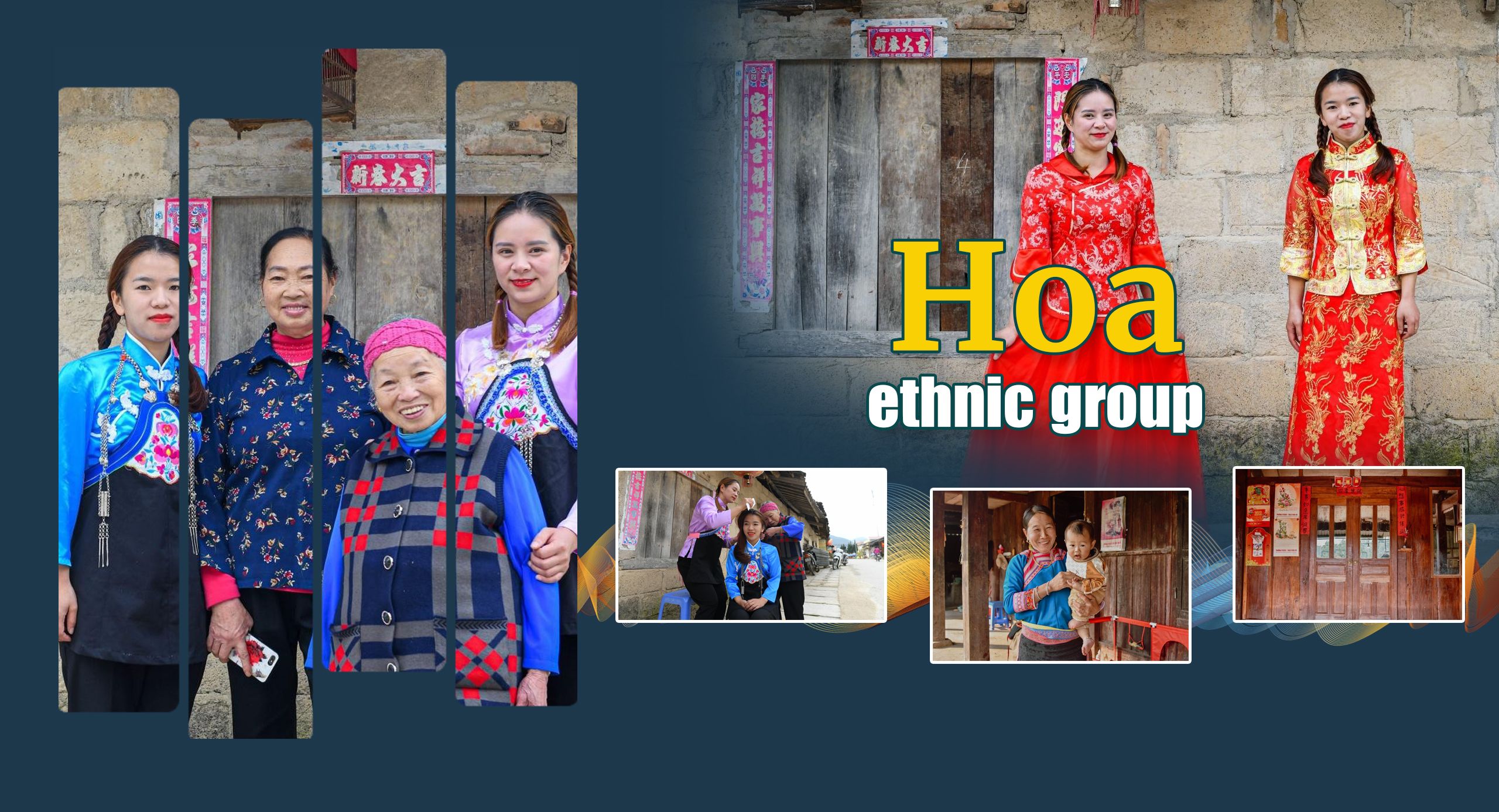
The Chinese ethnic group, belonging to the Sino-Tibetan language group, is an ethnic community that plays an important role in many economic, cultural, and social fields in southern Vietnam.
1. History
Hoa ethnic groups have migrated to Vietnam at various times since the 16th century; other waves of Hoa immigrants in the late Ming and early Qing dynasties, which lasted until the first half of the twentieth century.
Other names: Khach, Han, Ta
2. Geographical distribution
TThe Hoa ethnic group migrated into both northern and southern Vietnam from many localities, by many roads, in different times, lasting from the 16th century until 1954. The formation of the 17th parallel (1954) divided the two regions of Vietnam with different political institutions; history has witnessed about 40,000-45,000 Hoa people leaving northern Vietnam to migrate to the southern region.
The area lives mainly in Ho Chi Minh City, Dong Nai, and Soc Trang.
3. Population, language
- Population: According to the census on the 53 ethnic minorities as announced on April 1, 2019, the total population of the Hoa ethnic minority group is 749,466 people, 389,651 of whom are male and 359,815 are female. 30.3% of the population live in rural areas. There are 241,822 households.
- Language: Language belongs to the Han language group (Sino-Tibetan language family)
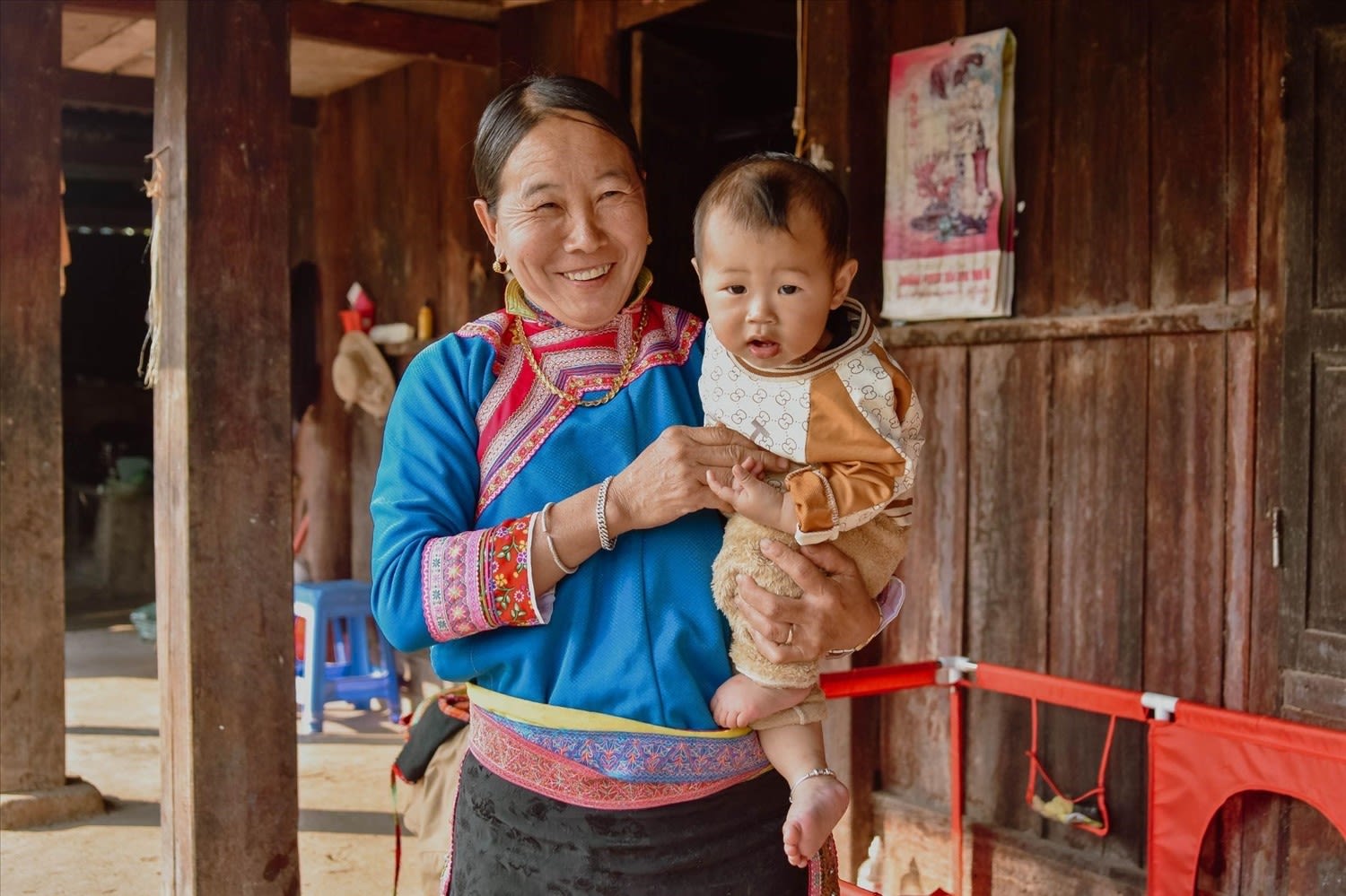
The life of the Hoa ethnic group is a combination of Vietnamese and Chinese culture. (Photo: baodantoc.vn)
The life of the Hoa ethnic group is a combination of Vietnamese and Chinese culture. (Photo: baodantoc.vn)
4. Main features
- Food: The main food is rice, but meals often include varieties such as stir-fried noodles or noodle soup. In middle class family people eat rice soup with salty duck eggs for breakfast, while better-off households will eat noodles, dumplings, and shumai.
The drink of the Hoa ethnic group, in addition to the effect of refreshment, is also considered as medicine: good for the whole body.
- Costume: Women wear a blouse with a high collar, buttoned down along one side, and high cuts along each side panel. The long Hoa dress, tight around the hip, and with high-cut panel along one side, is also very popular. Women, especially young ones, like to dress in red, pink, or dark colours.

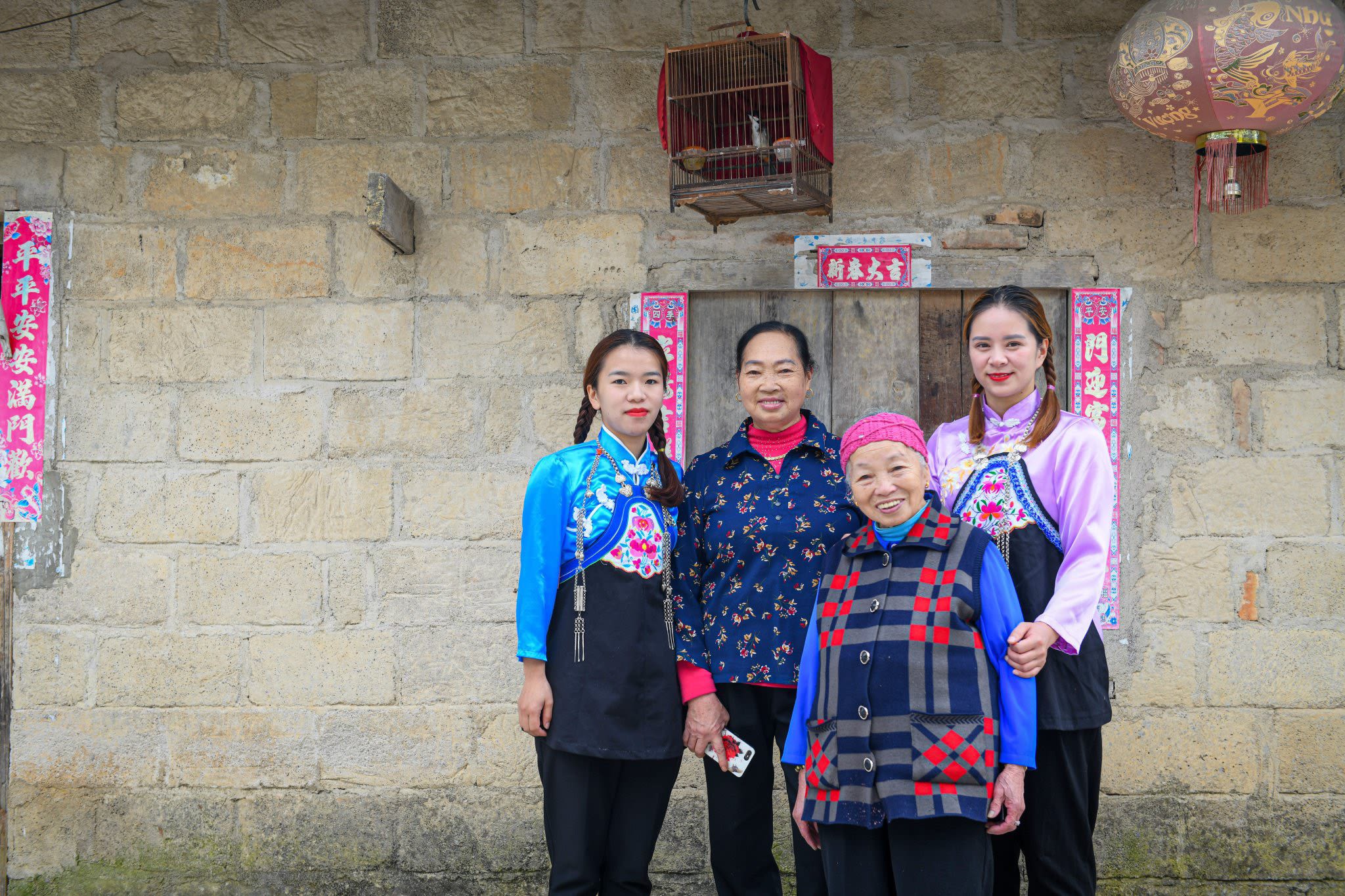
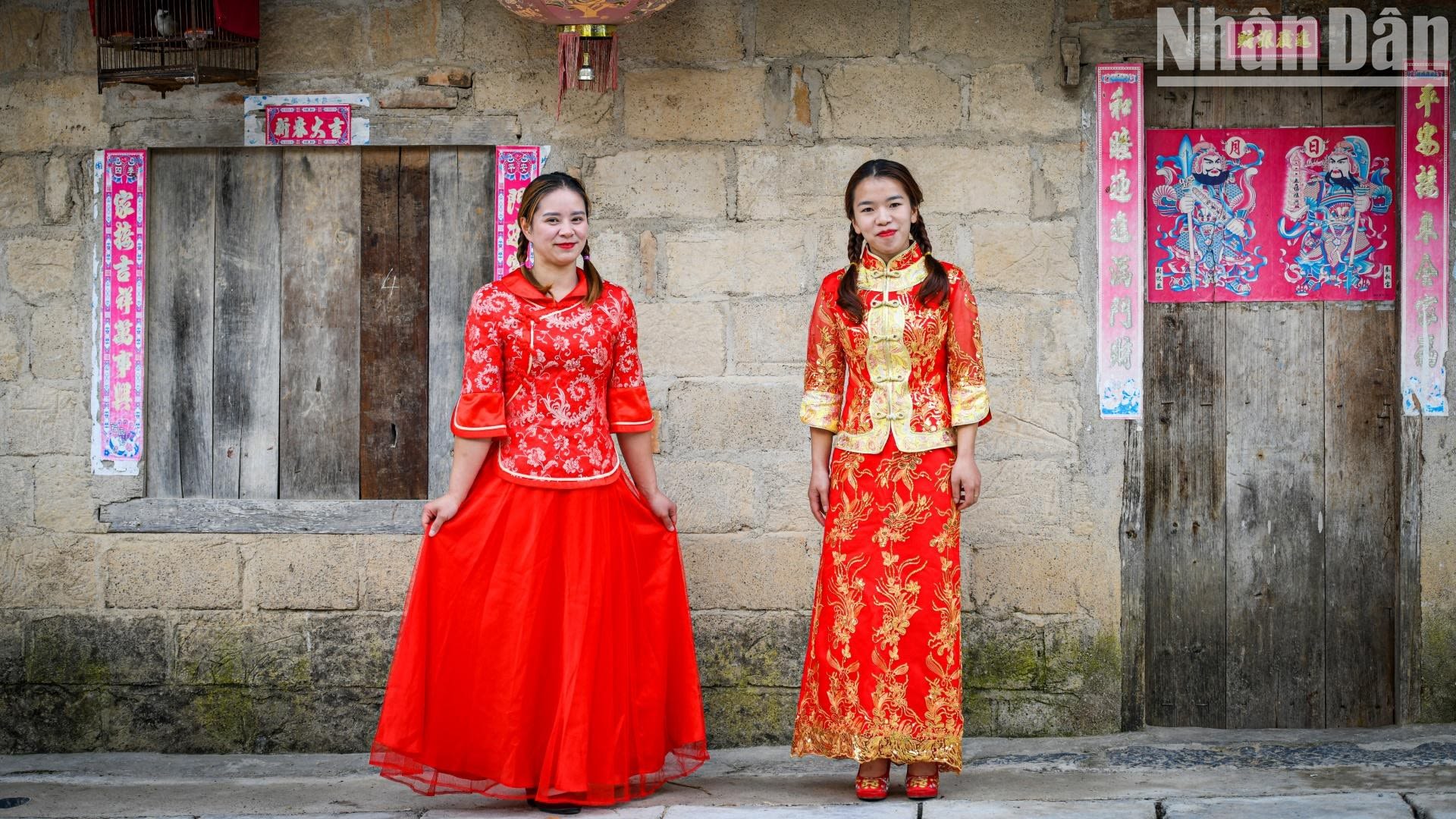

The Hoa often sew their own clothes at home. They prefer brocade patterns and bright colours. (Photo: Thanh Dat)
The Hoa often sew their own clothes at home. They prefer brocade patterns and bright colours. (Photo: Thanh Dat)

The Hoa often sew their own clothes at home. They prefer brocade patterns and bright colours. (Photo: Thanh Dat)
The Hoa often sew their own clothes at home. They prefer brocade patterns and bright colours. (Photo: Thanh Dat)

The Hoa often sew their own clothes at home. They prefer brocade patterns and bright colours. (Photo: Thanh Dat)
The Hoa often sew their own clothes at home. They prefer brocade patterns and bright colours. (Photo: Thanh Dat)
The men wear black, or dark green shirts, which have buttons on one side, standing collar, and cut panels on the two sides. The shirt with four laps, standing collar, cut in the middle and with pockets, is also popular for men.
The women are fond of jewellery, especially bracelets (made of brass, gold, stone, or jade), earrings, and necklaces.
The men like to implant gold teeth as an accessory.
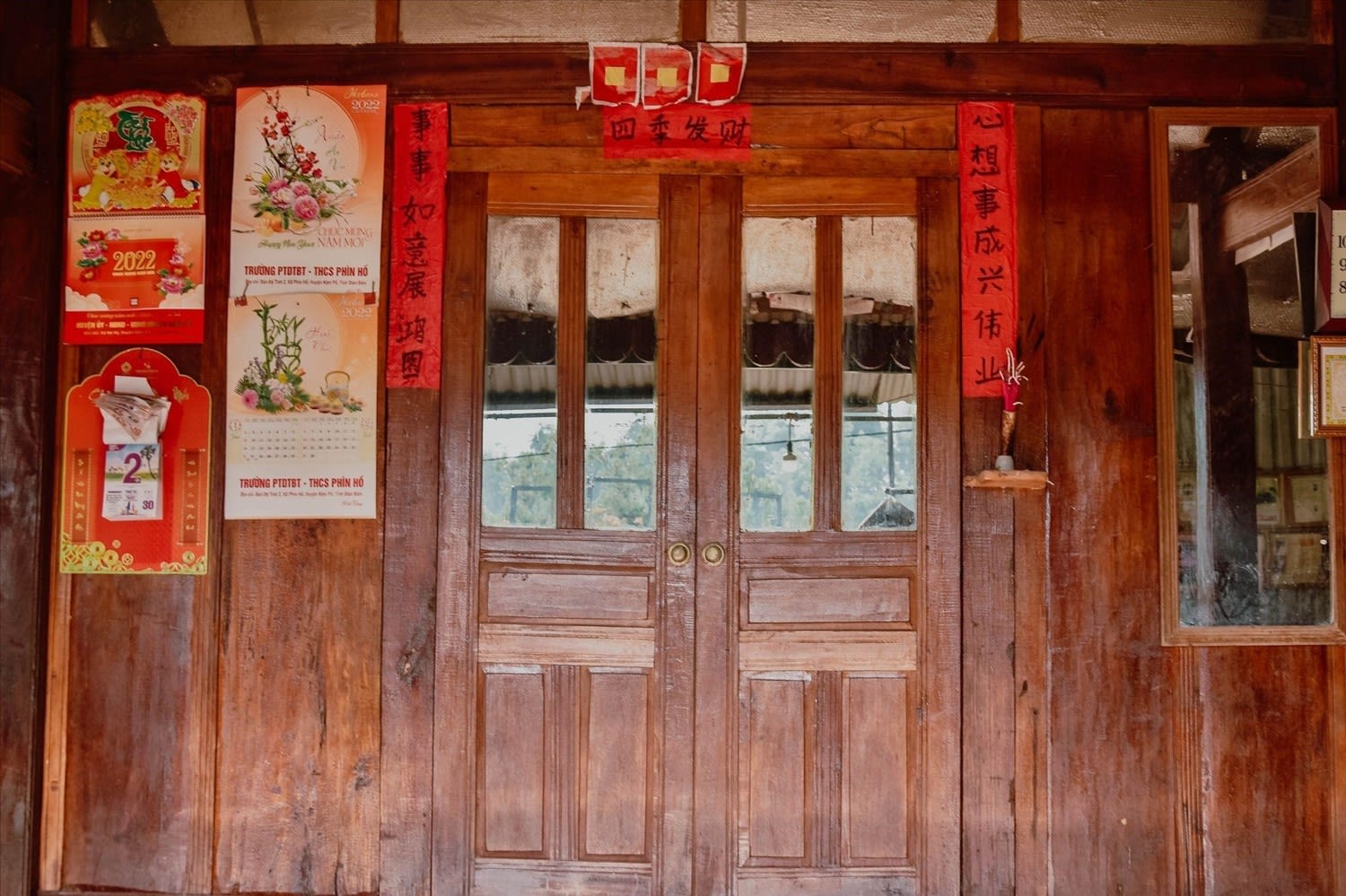
There are three kinds of houses: those with 3 compartments and 2 wings. They are usually built from stones and bricks, have earthen wall, and have either tile or thatched roofs. (Photo: baodantoc.vn)
There are three kinds of houses: those with 3 compartments and 2 wings. They are usually built from stones and bricks, have earthen wall, and have either tile or thatched roofs. (Photo: baodantoc.vn)
- Residence: Those who are farmers form their own villages that usually lie on the foothills, on terraces, and along beaches. The above sites have the advantage of being close to water sources and are convenient for traffic and transportation. In the villages, those who have houses close to each other are usually relatives.
In urban areas, they tend to form their own Hoa neighborhoods.
Houses usually have three types: houses with three compartments and two wings, houses with shapes like "Mén" and "Kǒu" Chinese characters. They are usually built from stones and bricks, have earthen walls, and have either tiled or thatched roofs.
- Social relations: In a Hoa family, the husband is the head of the household. Community relations are still strong despite the gap between the rich and the poor. In each village, the position of the head of a family line is promoted and plays a big role in resolving village relations.



The altar area is placed in the most central position in the Hoa house, with red as the main colour, decorated with more red paper in Chinese characters with the content of praying for happiness, good fortune, and peace. (Photo: baodantoc.vn)
The altar area is placed in the most central position in the Hoa house, with red as the main colour, decorated with more red paper in Chinese characters with the content of praying for happiness, good fortune, and peace. (Photo: baodantoc.vn)

In addition to the large central altar, the Hoa also have a small altar next to it, placing a bowl of incense and three cups of water on it. (Photo: baodantoc.vn)
In addition to the large central altar, the Hoa also have a small altar next to it, placing a bowl of incense and three cups of water on it. (Photo: baodantoc.vn)
- Worshiping: Ancestors, family spirits, guardian Gods (kitchen God, land God, and the God of wealth), and Buddha are popular figures of worship.
Pagodas and temples are widely developed. They are also the Hoa’s place for a social headquarters or a school, and where communal activities and Festivals take place.
- Writing: The Chinese language is taught and studied in grade school.
- Culture: The Hoa have varieties of traditional culture activities, such as singing, dancing, and comedy. They also play a wide range of instruments: several kinds of flutes, moon-shaped flute, zither, two-string Chinese violin, and skylark singing (san co), which is enjoyed by many younger ones. A popular traditional form of amateur cultural group is called “nhac xa”.
5. Economic conditions
In rural areas, the Hoa live mainly as farmers, who plant rice in fields. In urban areas, they are active in trading in service businesses.
Handicrafts such as pottery making (in the provinces of Quang Ninh, Song Be, and Dong Nai) and paper and incense making (in Ho Chi Minh City) are highly developed.
A part of the Chinese residing in the coastal areas live mainly by making salt and fishing. In business, the Hoa always respect the word “trust”.